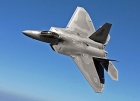Mgellis
Posts: 2054
Joined: 8/18/2007
Status: offline

|
Okay, I'd like feedback on some Cold War scenario ideas...
By the mid-1960s, a full scale nuclear war would have been cataclysmic. Earlier than this, the relatively small number of ballistic missiles--the first ones show up around 1960--means that bombs have to be delivered by bomber, which means there is at least a chance of stopping some or most of them. So it is possible one side might "win" (or, at least not be damaged so badly that survival as a nation was no longer possible). By the mid-1960s and after, however, a full-scale nuclear war can only mean mutually assured destruction.
I'm also assuming that once nuclear weapons are used in Europe that things would rapidly escalate to a full scale exchange.
But what if there was fighting, nuclear or not, elsewhere in the world? Korea did not trigger a full-scale war, after all, even though it was no secret that Soviets were helping the North Koreans fly jets that were shooting down Americans.
So, on a scale of 1 to 10, where 1 is "no chance of escalation to full-scale nuclear exchange" and 10 is "escalation to full-scale exchange is certain and unavoidable," what do think would happen if...
Scenario A: Soviet ships ignore the 1962 blockade of Cuba and try to run it; American ships fire on Soviet vessels, but do NOT engage Soviet forces anywhere else in the world (e.g., Europe) and do not even try to attack Cuba.
Scenario B: Similar, but elsewhere in the world and perhaps with other powers involved. For example, what if Soviet forces were aiding communist insurgents in Colombia and the Colombian navy went after the convoy bringing the rebels tanks, artillery, etc. as it got close to Colombian waters? The escorts would fight, of course, but what would happen after the battle was over?
Scenario C: A Soviet submarine is found near American waters, possibly in international waters (depending on whose definition you are using) and close enough to get America upset, but then refuses to surrender. American forces sink the Soviet submarine (or at least try to). Two Soviet destroyers are nearby...will they start shooting on their own once they know the sub is being attacked, wait for orders, or what? And if some general battle between Soviet and American forces does break out in the Atlantic, but nowhere near Europe itself, and it does not look like either side is planning an actual invasion, is that the end of it or does it escalate?
Scenario D: One task force tries to force another task force out of an area (military exercises are going on, secrets missile tests are going on, etc.) and fighting starts. For example, a Japanese task force (three destroyers) enters the Sea of Okhotsk, doing training, showing the flag, etc., the Soviets try to force them out for some reason, and fighting starts. The Japanese sink two Soviet missile corvettes and then withdraw, but the Soviets sink a Japanese destroyer with aircraft as they make their way back to Japan. Does this lead to a global war or do the superpowers just yell at each other for a while in Pravda and the New York Times?
Scenario E: During the Vietnam war it becomes obvious that the Soviets are not just selling planes to North Vietnam but flying and fighting alongside them--the very newest Soviet fighters have been spotted and they have Soviet markings. How would American respond? Would America try to sink any Soviet ships in the area to prevent them from bringing in more supplies? Would Soviet subs go after American carrier groups? A "state of war" would exist if any of those things happened, but as long as the Soviets did not suddenly attack West Germany, etc., would the situation remain contained in the region of the South China Sea?
I look forward to your comments. Thanks.
|
 Printable Version
Printable Version










 New Messages
New Messages No New Messages
No New Messages Hot Topic w/ New Messages
Hot Topic w/ New Messages Hot Topic w/o New Messages
Hot Topic w/o New Messages Locked w/ New Messages
Locked w/ New Messages Locked w/o New Messages
Locked w/o New Messages Post New Thread
Post New Thread